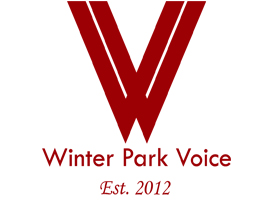What is a “Third Place?”
What is a “Third Place?”
Why Is It So Important?
 All of us know those special “cool” places we seek out when we want to experience personal fulfillment beyond our First Place (home) and our Second Place (work).
All of us know those special “cool” places we seek out when we want to experience personal fulfillment beyond our First Place (home) and our Second Place (work).
These places have certain characteristics we enjoy. They present socially diverse, culturally engaging environments. These “social condensers” or “civic cafes” encourage open conversation and create places for all levels of a community to come together. They allow the suspension of social and political distinctions that have made us increasingly divided and isolated.
Ray Oldenburg, in The Great Good Place (1989), calls these locations Third Places. Third Places are critical to a community, according to Oldenburg. Dom Nozzi, AICP, summarizes Oldenburg’s notion of Third Places:
[av_promobox button=’no’ color=’theme-color’ custom_bg=’#444444′ custom_font=’#ffffff’ size=’large’ icon_select=’no’ icon=’ue800′ font=’entypo-fontello’ box_color=” box_custom_font=’#ffffff’ box_custom_bg=’#444444′ box_custom_border=’#333333′ av_uid=’av-1y8cen’]
They are distinctive informal gathering places, they make the citizen feel at home, they nourish relationships and a diversity of human contact, they help create a sense of place and community, they invoke a sense of civic pride, they provide numerous opportunities for serendipity, they promote companionship, they allow people to relax and unwind after a long day at work, they are socially binding, they encourage sociability instead of isolation, they make life more colorful, and they enrich public life and democracy. Their disappearance in our culture is unhealthy for our cities because . . . they are the bedrock of community life and all the benefits that come from such interaction.
[/av_promobox]
Other experts like William H. Whyte (City) and Fred Kent, Founder of Project for Public Spaces www.pps.org, have described the distinctive characteristics of a successful Third Place. It must be readily available to all groups – either free or for a nominal charge — to enter and purchase food, drink, entertainment, be educated or partake of other activities that are present within. It must be easily accessible to neighborhoods, community stakeholders and visitors. It should be a place where people feel welcome and comfortable, and where they are encouraged to enter into conversation with one another. People who go there should anticipate meeting old friends and making new ones, and they should expect to take away something they cannot normally find in other places.
Examples of important Third Places include cafes, parks, museums, libraries, playing fields, churches and bars. A good new Third Place builds its own constituency. It gets people to form routines — for example, alfresco lunches, morning lattes or the children’s storytelling time. This encourages people to use new paths. In other words, supply will create demand.
Oldenburg points out that desirable experiences will occur when there are places that are conducive to them — or they will not occur at all. When certain kinds of places are not active, certain positive experiences disappear. A Third Place is not something to look at, it is something to live within.
Today, the City of Winter Park is, itself, a Third Place. It is envied and studied by cities and planners locally, regionally and internationally. Citizens and visitors alike know and enjoy the long-ago developed Third Places within our Third Place, like Central Park, Park Avenue, Mead Gardens, museums, sidewalk dining, the golf course — the list goes on. Over time, some of these places have even changed location, like our library, hotels and post office.
As a 30-year citizen I’ve been blessed to live and raise our two daughters in Winter Park. I would encourage not only the preservation of our past and present world-class Third Places, but also ask that we all support our city’s process of envisioning our future. Continuing to create new Third Places that help further express our rich diversity and ability to socially and intellectually connect with one another may make us one of the very few cities that can continue to do what others cannot.

Recent Comments